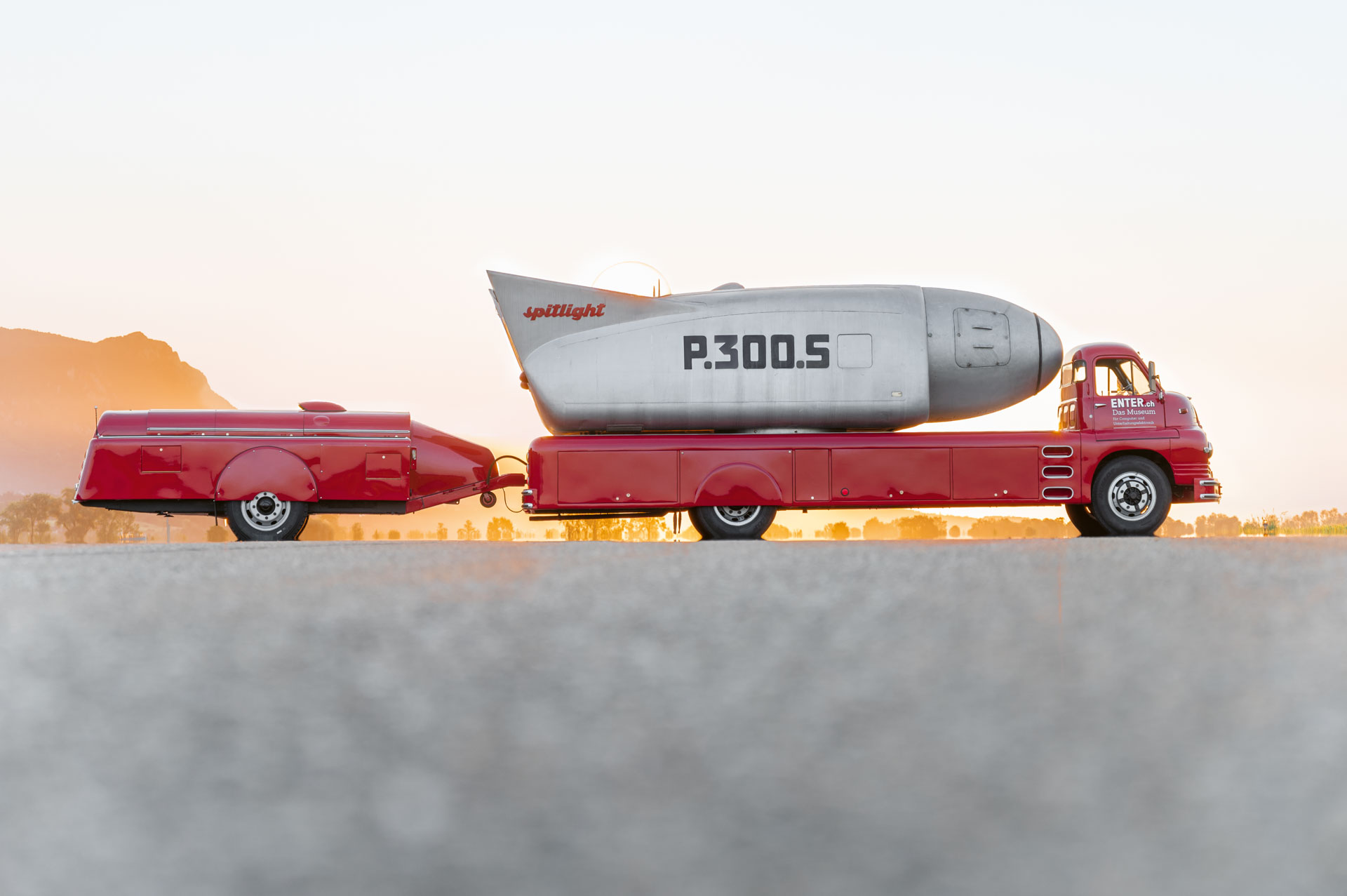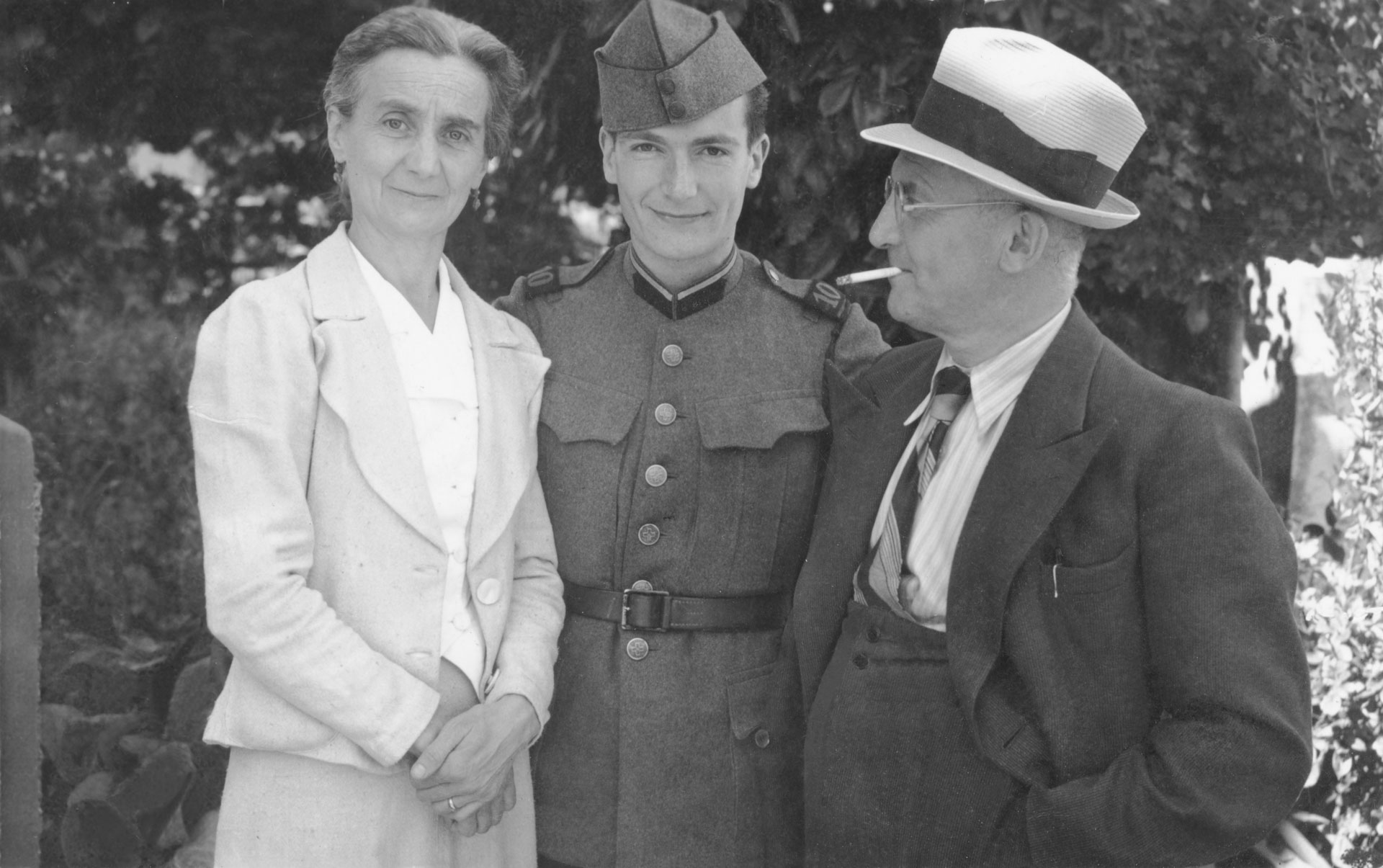
The projector that conquered the Olympics

The Spitlight projector made by Swiss engineer Gianni Andreoli was an extraordinary invention which seemed to have a bright future, but legal disputes resulted in it being mothballed and forgotten. The ENTER Foundation has rediscovered it, restored it and published a book of photographs about it.
Today the Spitlight would probably be branded as light pollution because the writing projected into the night sky would affect the view of the stars. In the 1950s, however, it amazed everyone, especially during the 1956 Winter Olympics held at Cortina d’Ampezzo in Italy.
These were the first Games to be televised and the first in which the Soviet Union took part. For 11 days, from January 26 to February 5, the projector that looked like a silver rocket lit up the slopes of the Pomagagnon mountain. When night fell over the Dolomites, the five circles of the Olympic logo, the names of the winners, the schedule of races, the correct time, and a few advertising slogans were projected. The whole display could be seen up to 12km away in the Ampezzo Valley. Until 1985 the Spitlight was the most powerful projector in the world, according to the Guinness book of records.
The creator of this magic spectacle was an engineer from Italian-speaking canton Ticino named Gianni Andreoli, who supervised a team of specialists. Every evening, the bright red lorry with the Spitlight mounted on it parked a short distance from Cortina d’Ampezzo to start the projection.
“This major sporting event was expected to launch his invention on the world stage. But Gianni Andreoli came back from the Dolomites a disappointed, embittered man,” says Felix Wirth, a historian and co-author of the recent bookExternal link on the Spitlight, Vision of a visionary – Die unglaubliche Geschichte des Spitlight (the unbelievable story of Spitlight).
A brilliant mind fascinated by technology
Gianni Andreoli was born on June 25, 1919, in Mendrisio, canton Ticino. From his childhood on he loved designing and inventing machinery. Having graduated from the state secondary school in Lugano, Andreoli went on to design and build the smallest aircraft engine in the world, which was presented at the Zurich National Exhibition in 1939. He gave the invention the number 13, and added a P, the first letter of his nickname “Pininasch” which in local dialect meant “little one”. He labelled all his future inventions this way.
Between 1939 and 1945 he studied mechanical engineering at the federal technology institute ETH Zurich, specialising in aerodynamics. During his time as a student he was called up for national service. He became an officer and an airforce pilot. In the postwar years he worked at the federal aircraft production facility in Emmen, near Lucerne, where he became interested in projection techniques and spent more and more time on his inventions. “He had a brilliant mind fascinated by technology,” Wirth says.

A Spitlight projector was first used in 1952 at an international photographic exhibition in Lucerne. While the projection work was going on, Andreoli fell from a three-metre-high platform, badly injuring his back. During a three-month period of convalescence at the Sant’Anna Clinic in Sorengo, he dreamed up the idea of a projector which could use the clouds as a screen.
“Andreoli was thinking maybe of fantastic adventure stories he read as a boy,” Wirth says. “In his short story In the Year 2889, Jules Verne mentions just this kind of projector.”
Genius and visionary, but no manager
For the realisation of the Spitlight P.300.S project, Andreoli needed investors to come up with CHF360,000 (equivalent to CHF1.5 million ($1.65 million) today). Thanks to his own contagious enthusiasm, the young engineer managed to win over Carlo Caimi, a Ticino businessman who had made most of his money from the tobacco trade.
“Caimi was a former mayor of Ligornetto and a son-in-law of the government minister Giuseppe Motta, so he had good political and economic contacts in Ticino and Switzerland,” Wirth explains. “In the 1930s and 1940s, however, he fell foul of the law, being suspected of tax evasion.” Other investors were Lugano lawyer Alberto Rossi, who also had a dubious past: in the 1930s he was one of the Ticino Fascists who thought up the “March on Bellinzona”, an attempted coup which fizzled out in January 1934.
The light source which projected the images and written text a distance of 6km was a carbon arc lamp. This technology produced a very intense light like that produced by a welding arc. The brightness of the lamp measured 350,000 lumen (a home projector today has about 3,000 lumen) and it created temperatures of 5,000°C to 7,000°C. In order to operate, the Spitlight needed a power source, which was a 120CV diesel generator. To control the temperature of his projector, Andreoli had developed a system of air and water cooling. The Spitlight was mounted on the back of a Bedford lorry, made in 1952 in Luton, England.
In 1953 these three men founded Metron Holding Limited, registered in Lugano, and Andreoli could at last make his dream come true. By February 1955, the construction of the Spitlight was complete. The projector went on a tour of Europe. Mounted on the back of a bright red lorry, it looked like a gleaming spacecraft. It was presented to the public in Kassel and Munich in Germany and in The Hague in thr Netherlands. The same year it was featured in Switzerland at the BEA trade fair in Bern, and during the Tour de Suisse it was used to project advertising slogans and cycle race results.
Andreoli’s bold invention seemed destined for a glorious future. But the three partners were already at loggerheads because of a loan of CHF100,000 taken out at the Hochdorf Volksbank in Lucerne. No one accepted the responsibility for paying back the money, resulting in a protracted court-case.
“Andreoli was a visionary who just did not ascribe much importance to the legal and financial details of his inventions,” notes Wirth.
Abrupt departure from the Games
At Cortina d’Ampezzo, Andreoli started to realise that he would return from the Olympics a poorer man than he set out. In fact, unknown to him, the Spitlight had been lent to the organisers of the Games at no charge. The inventor was reduced to despair at this and decided on the spur of the moment to disappear with his invention.
“On getting back from Cortina d’Ampezzo, Andreoli parked the red lorry first of all in a shed belonging to a tannery at Canobbio, about 400 metres from the villa of one of the investors, then in a garage in Lugano,” Wirth says. “A legal contest and bankruptcy proceedings ensued, which resulted in the projector being auctioned off for CHF1,000 in February 1962.”
For over 20 years, the Spitlight rusted in a shed belonging to a car garage in Lucerne. Its creator never saw it work again. Andreoli died from leukaemia aged 53 in December 1971.

In 1983, after reading a newspaper article about Andreoli and his story, the head of the Technorama museum in Winterthur became fascinated by the Spitlight.
Twenty-two engineers put in 4,000 hours of their free time to bring it back to its original splendour. In 1985, the museum had the projector working a few times, but operating it turned out to be a financial burden. The Spitlight was parked in front of the Technorama entrance, and then forgotten among the museum’s stores.
Once again, Andreoli’s projector seemed to be consigned to oblivion.
In 2019, however, the machine was rediscovered by ENTERExternal link, the museum of computer and entertainment electronics in Solothurn. The Spitlight was again restored and the projector itself replaced by a more modern device which was tested during the Solothurn Film Festival in 2021.
The Spitlight was back illuminating the façades of a Swiss city, as it had done 70 years before in Lucerne – and Andreoli’s vision lived again.
Translated from Italian by Terence MacNamee

In compliance with the JTI standards
More: SWI swissinfo.ch certified by the Journalism Trust Initiative



































You can find an overview of ongoing debates with our journalists here . Please join us!
If you want to start a conversation about a topic raised in this article or want to report factual errors, email us at english@swissinfo.ch.